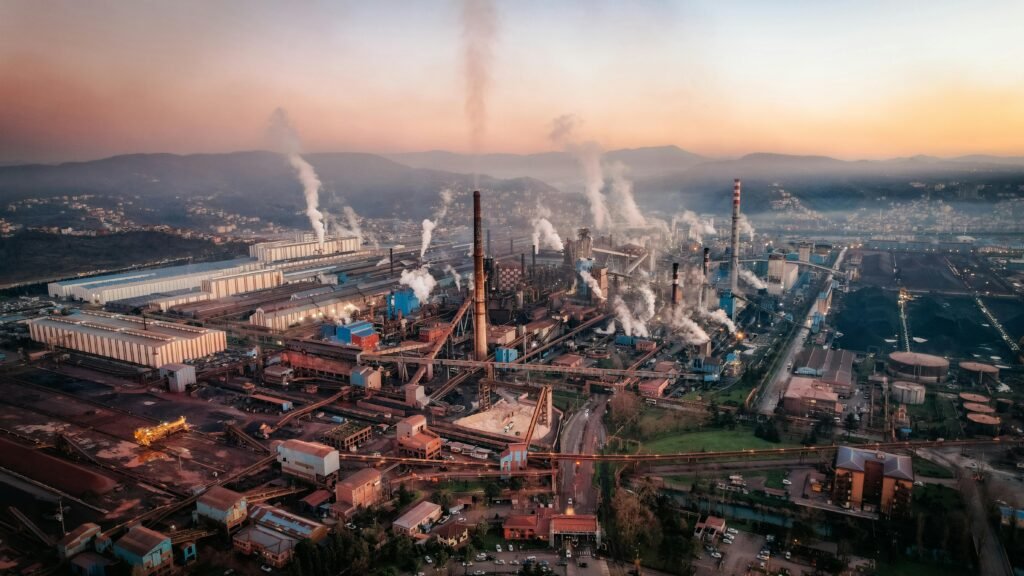In a world urgently seeking solutions to the climate crisis, the race to dominate green technology is accelerating. Countries are competing to out-innovate each other in renewable energy, geothermal systems, carbon capture, and eco-friendly infrastructure. Yet, despite the hype, a critical question arises: Can this race truly save the planet?
A growing body of research suggests that green tech alone won't suffice. While these technologies are crucial to reducing emissions, they fail to address deeper systemic problems like overconsumption, global inequality, and unchecked economic growth. This article explores why the current approach to green innovation, despite its many benefits, may ultimately fail to achieve long-term climate sustainability.

The Promise of Green Tech — and the Pitfalls Behind It
Green technology, defined as innovations that minimize environmental impact, is often portrayed as the linchpin of climate mitigation. Nations like Germany, with its Energiewende policy, and corporations like GE Wind Energy are racing to lead in sectors such as wind, solar, and hydrogen. As Nature (Barbier, 2025) notes, countries with high green-tech capabilities tend to generate more environmental patents and experience lower CO₂ emissions per capita.
But the same study warns that “national competition in green innovation may increase prosperity without improving sustainability” if global cooperation and consumption reform aren't part of the strategy. The issue isn’t just what tech we build, but how, where, and why we deploy it.
Why Green Innovation Alone Is Not Enough
1. Green Tech Still Has a Dirty Footprint
Behind every sleek solar panel and wind turbine lies an extractive process. Rare earth metals, water-intensive lithium mining, and energy-hungry manufacturing make many green technologies environmentally costly upfront. As the NIH (2025) study points out, lifecycle emissions and resource consumption from producing renewable systems can still fuel climate degradation if not regulated and recycled effectively.
Even as the green technology news cycle champions progress, it often overlooks the carbon and ecological debt incurred during production.

2. The Race Ignores the Global South
The green technology race is disproportionately dominated by developed economies. Countries like the U.S., Germany, and China have the capital to subsidize innovation, but the Global South—often the most vulnerable to climate change—is left behind. According to the Green Economy Coalition (2025), “green growth” has largely ignored equity, leading to a scenario where clean tech is developed where it’s needed least and is unaffordable where it’s needed most. https://pubmed.ncbi.nlm.nih.gov/40312514/
3. Overconsumption Is Still the Elephant in the Room
Perhaps the most overlooked limitation is our refusal to consume less. NDTV (2025) and Social Change Innovators both highlight how focusing on clean production misses the point if demand continues to balloon. A green electric SUV still contributes to environmental strain if millions are bought instead of public transport being improved.
This critique mirrors Barbier’s warning in Nature (2025) that technological solutions will “fail without systemic changes to economic behavior and governance.”
Green Growth vs. Green Transformation
The danger of “green growth” is that it rebrands consumption as sustainable without changing our values or behaviors. According to RePEc (2025), the global competition for green innovation may create a “green bubble,” boosting GDP and stock markets without improving planetary health. Green consumerism, like purchasing eco-labeled gadgets, becomes more about status than sustainability.
Even urban greening efforts, while beneficial, are often cosmetic, as ResearchGate (2025) notes. Urban green spaces can help mitigate the urban heat island effect, but unless they are part of a broader ecological strategy, their impact remains limited.

_Why_the_green-technology_race_might_not_save_the_planet
Toward a True Sustainability Ethos
So, what’s the path forward?
Experts at Sri Lanka Guardian (2025) and LinkedIn (2025) suggest that international cooperation, regulatory frameworks, and deep behavioral change must accompany technological advancement. This means
- Investing in shared R&D and patent-sharing between nations
- Enforcing strong environmental regulations along supply chains
- Revising economic models that prioritize perpetual growth
- Encouraging consumption reduction, not just energy substitution
Only a combined approach — green technology plus structural reform — will have a fighting chance of reversing climate collapse.
Conclusion
The green-technology race, while necessary, is not sufficient. Without addressing consumption, equity, and policy reform, it risks becoming a detour instead of a destination. Technology is a tool, not a solution — and if we continue racing without rethinking our trajectory, we may run out of time before we reach the finish line.
If you’re interested in learning how green tech can work when aligned with sustainability principles, check out our companion piece: Building a Better World with Green Technology.
And don’t forget to comment below on what aspects of green innovation you’d like us to cover next!







